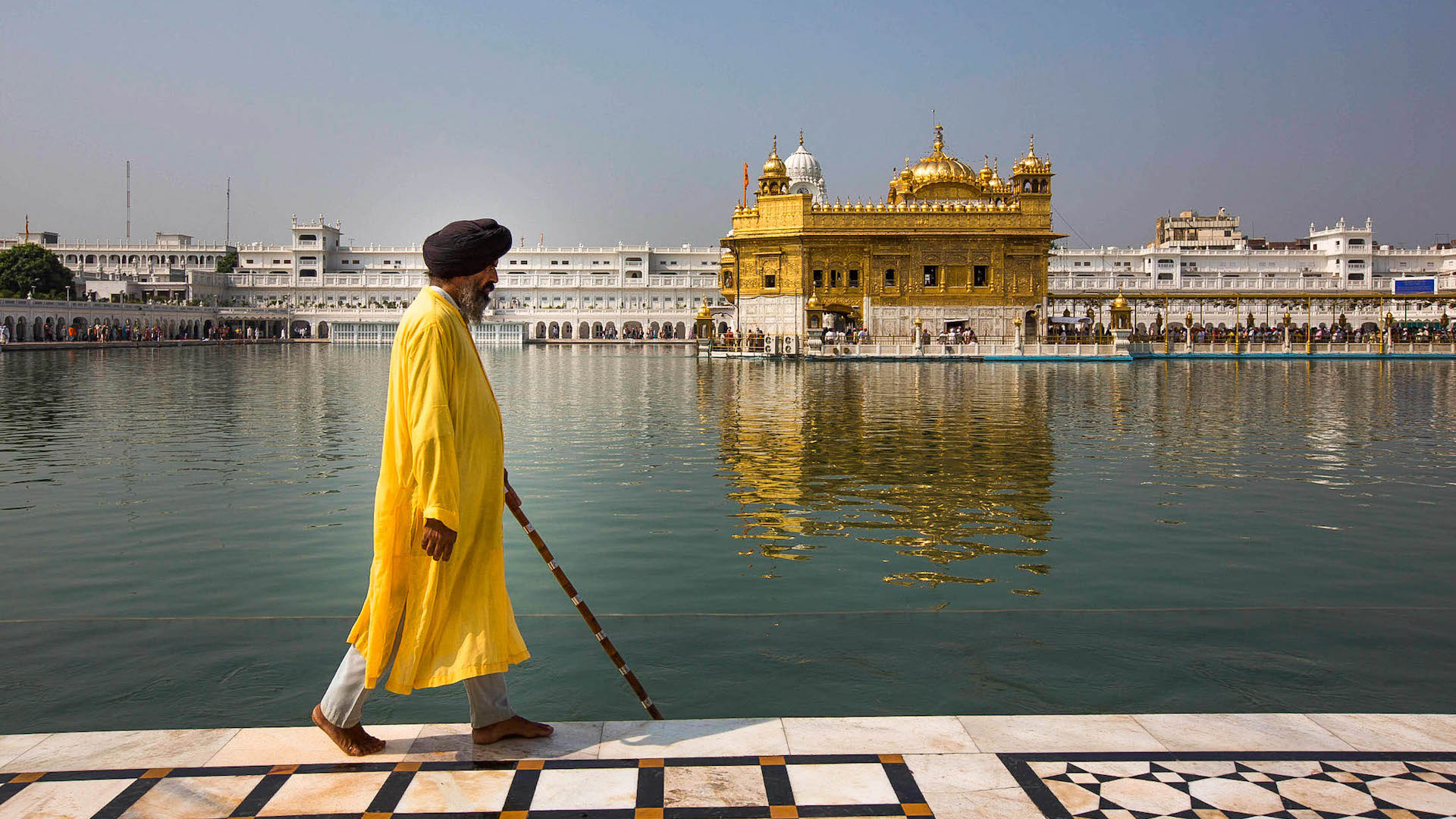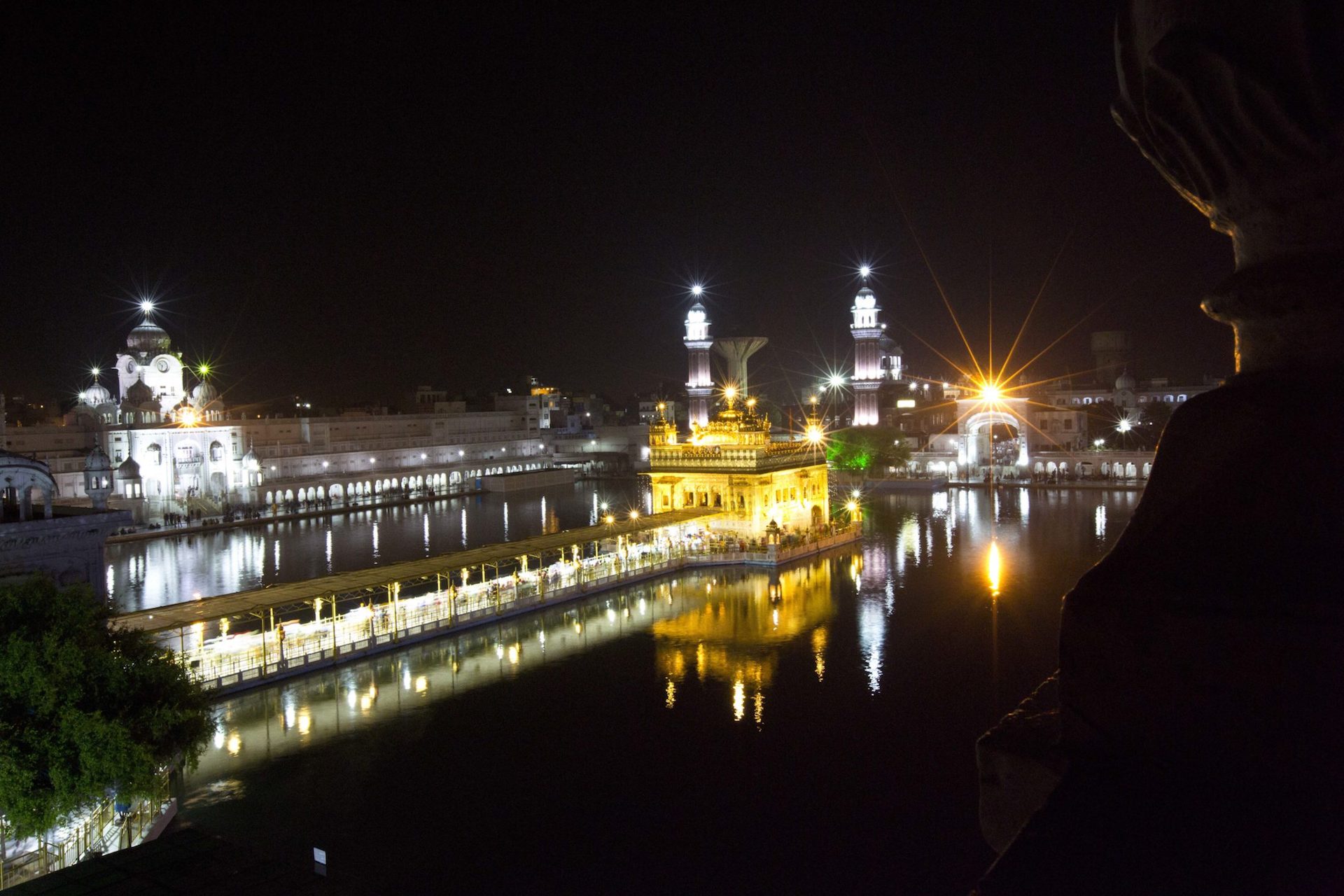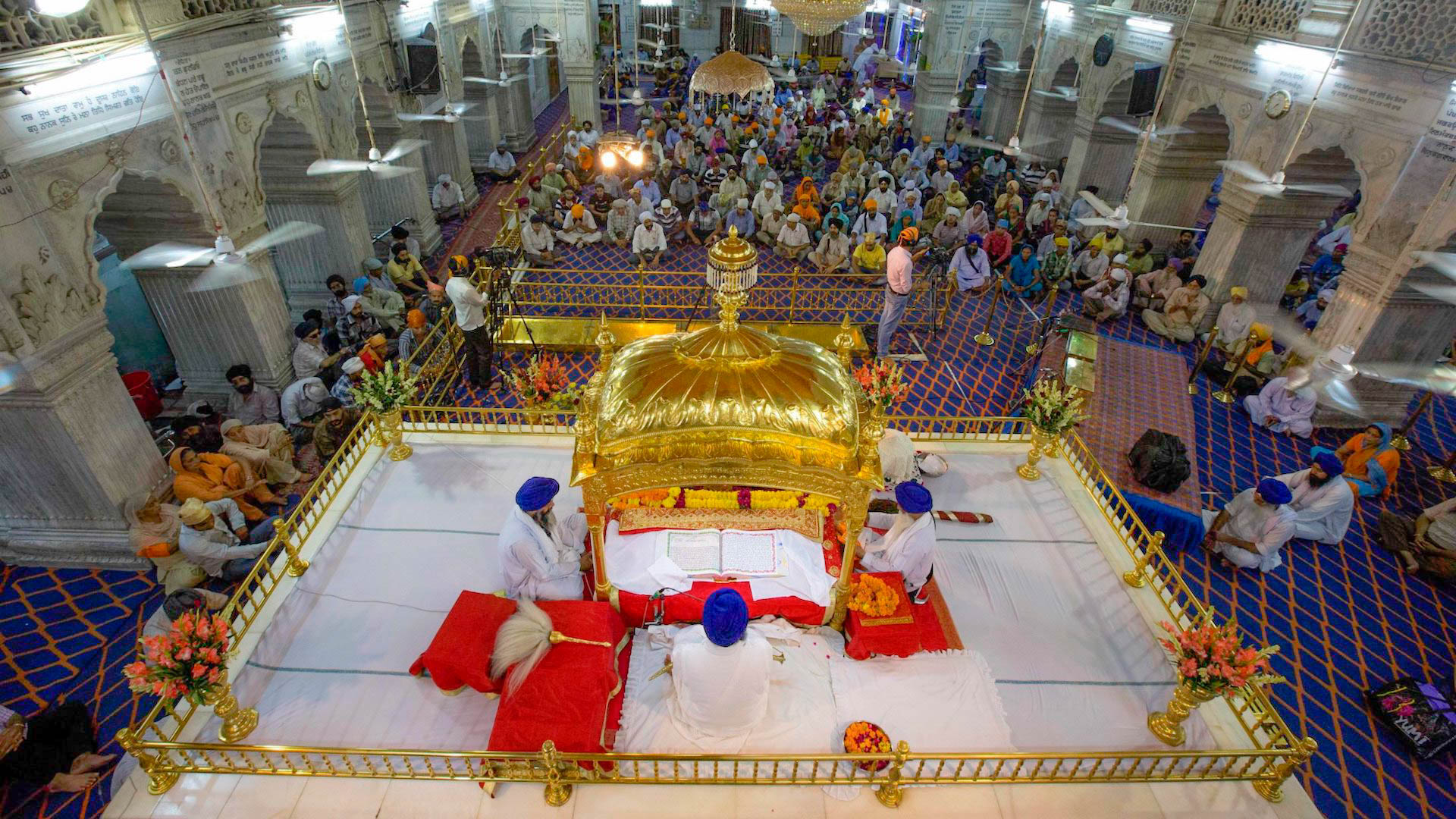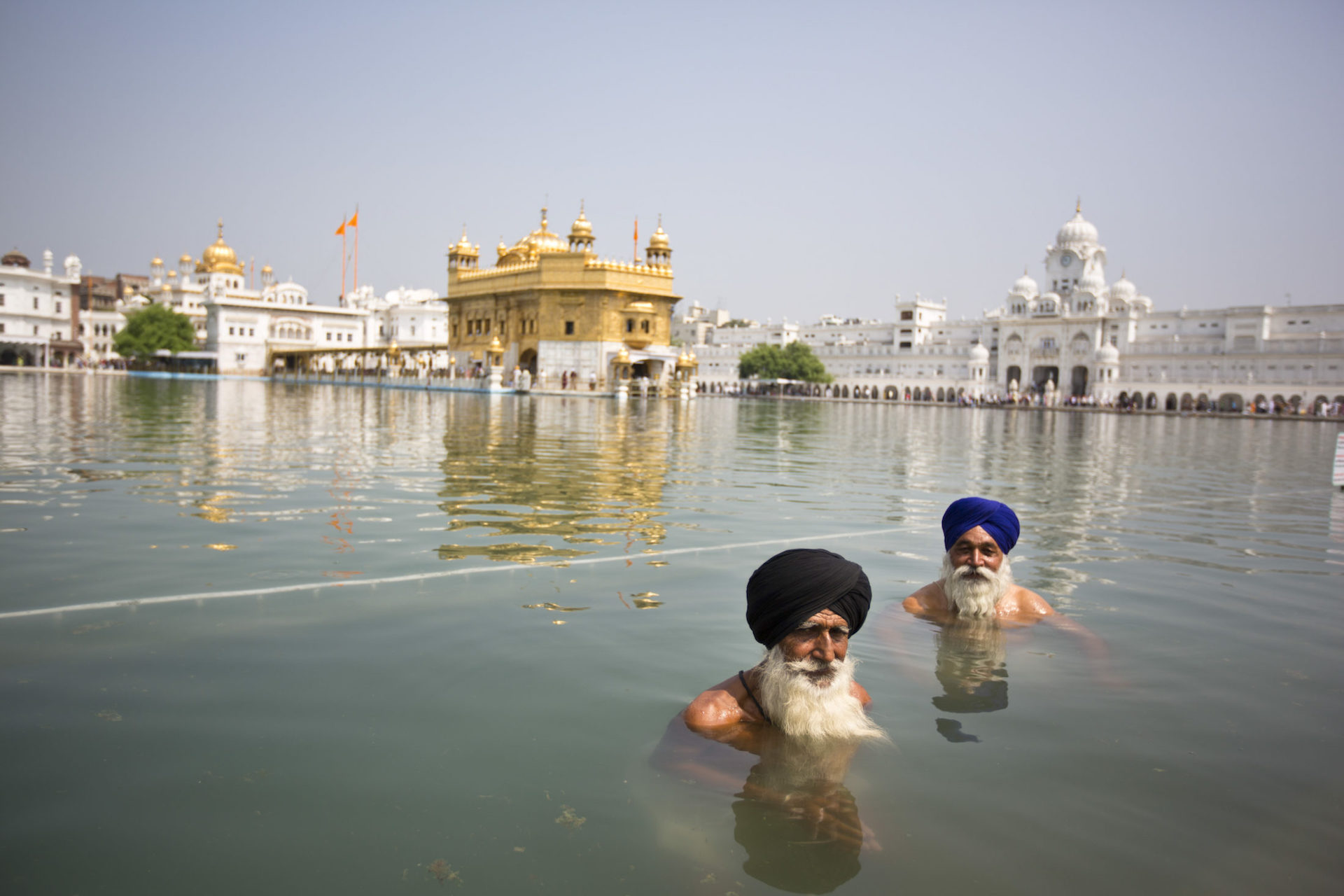
After observing religious devotees on the banks of the Ganges in India, around the city of Mecca, and in the Holy Land of Israel, the founder of Sikhism, Guru Nanak, concluded pilgrimages weren’t for him.
Nanak did not believe in blind ritualism, including pilgrimage. He said that true pilgrimage is an inner journey, venturing anywhere you can meet the Guru (God). For Sikhs, worship of God and service to others are much more important than going to a supposed holy site. Even still, Sikhs today do visit various gurdwaras—Sikh temples—with historical significance.
The word gurdwara means “doorway to God.” A gurdwara is any place where the Sikh holy book, Guru Granth Sahib, is installed, thereby making the site itself holy. Sikhs worship in the gurdwara by singing hymns and reading the Guru Granth Sahib (the only non-human guru).
Historic gurdwaras generally connected to one of the ten (human) Sikh gurus have become pilgrimage sites for Sikhs. The Harmandir Sahib gurdwara in Amritsar, India, is perhaps the most famous and certainly the most stunning.
The Golden Temple
More commonly known as the Golden Temple, Harminder Sahib means “temple of God.” It houses the Eternal Throne, where social and judicial matters within the Sikh community are settled, and the sacred pool, from which the city of Amritsar got its name. The third of the ten Sikh gurus had the idea to build a central place of worship for the Sikh people. The fourth, fifth, and sixth gurus made that idea a reality by founding Amritsar and the Golden Temple. Over time, the temple became a symbol of spiritual and historical traditions for the Sikhs and is the main place Sikhs want to visit today.

The Golden Temple shines under a dark night’s sky in Amritsar, India. Photo from the IMB Photo Library.
The Golden Temple wasn’t originally golden. It was constructed with bricks in the 1500s. However, the temple and surrounding grounds have been defiled and destroyed several times at the hands of other religious groups in opposition to the Sikh people. Sikhs have answered the persecution by rebuilding the temple and grounds time and time again. The latest temple was constructed with marble and overlaid with gold foil.
What Sikhs Do at the Golden Temple
Sikhs believe in the inclusion of all peoples, so anyone is permitted to visit the temple grounds. There are four main entrances to the Golden Temple, one from each side to signify that people from all directions—beliefs—are welcome. The temple itself is at the center of the complex, surrounded by a large man-made pool.
Before entering the Golden Temple complex, visitors must remove their shoes. Everyone must cover their heads with a scarf or turban out of respect for the Guru Granth Sahib, then walk through running water to wash their feet. Sikhs usually bathe before visiting a gurdwara—some do so to keep the temple clean and others to enhance their ability to feel God’s energy throughout the holy place.

The Granth Sahib is a collection of holy Sikh scriptures. Sikhs consider it to be the final, living guru and, therefore, treat it with the utmost respect. Photo from the IMB Photo Library
Inside the gurdwara, the holy book is the center focus and rests on a raised platform under a canopy of cloth. Someone continually fans the book to keep unclean things from falling onto it. Sikhs consider the Granth Sahib to be the last, living guru, and they treat it with the utmost respect. They will bow to the book until their forehead touches the ground in front of it.
There is no set time or day of worship. There are also no priests in Sikhism, and anyone considered worthy (male or female) may read in the temple.
Outside the Temple
Upon leaving the main hall, people take kara prashad—a sweet pudding made from semolina, ghee, water, and raw sugar—as a symbol of receiving the God’s blessing. It is a reminder that all blessings come from his grace.
Once outside, people walk clockwise around the sacred pool. Many also bathe in the pool—men and boys in the open and women in a sheltered area on one corner of the pool. They believe this brings spiritual and physical benefits, though ritual bathing was one practice that Guru Nanak denounced as worthless because it cannot cleanse the inside of a person.

Men bathe in the pool surrounding the Sikh Golden Temple in Amritsar, India, while praying for forgiveness from sins. The teachings of the Sikh gurus does not condone the practice that has become a common means of earning forgiveness and healing. Photo from the IMB Photo Library.
Sikhs believe one way to achieve salvation is to meditate on the name of the Guru, so you often hear people muttering or singing words of praise to the Guru as they file down the causeway to and from the temple.
Visitors are always welcome to eat in the Golden Temple’s community kitchen. No reservations or seating arrangements are necessary—everyone sits on the ground and eats together. All of the work to keep up the gurdwara and run the kitchen is done on a volunteer basis. This service to God and to the community is seen as another way to achieve salvation.
What Can Christians Learn?
As Christians, we can visit the Golden Temple or any Sikh gurdwara to learn more about Sikhs. Many are truly seeking after God. Pray for God to lead you to those who are open to hear about the grace and truth of God revealed in Jesus Christ. Be respectful of their beliefs. Ask questions and listen to what they have to say. Then as you begin to see things through their eyes, you can introduce them to the True Guru and True Name, Jesus Christ. Share your own story about what Jesus has done in your life.
For more insight, read this article by a Sikh who explains what he used to believe.
Irene Wayne has served among South Asian peoples for twenty-two years.

